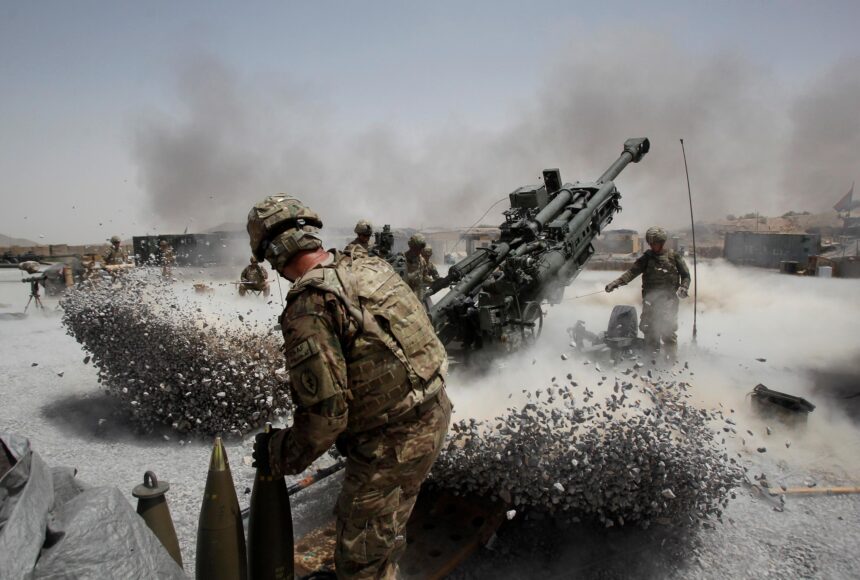Title: The Ineffectiveness of Military Solutions: Understanding the Challenges of U.S. Actions Against Latin American Drug Cartels
In light of a dramatic rise in drug-related violence and deaths, there has been an increasing demand for the United States to adopt a more forceful stance against the formidable drug cartels operating in Latin America. Advocates for military intervention contend that direct actions, such as airstrikes and special forces operations, could potentially halt the influx of narcotics into the U.S. and restore stability to affected regions. However, historical evidence indicates that these tactics may not only fall short but could also worsen the very issues they seek to address. Given the entrenched socio-economic challenges, pervasive political corruption, and resilient criminal networks involved, dismantling these powerful cartels requires more than just military force. This article delves into the intricacies of Latin America’s drug crisis and highlights why a solely militaristic approach risks neglecting critical underlying factors.
The Complexities of Latin American Drug Cartels and the Futility of Military Action
The environment surrounding Latin American drug cartels is characterized by an intricate interplay of socio-economic conditions, political turmoil, and cultural dynamics that extend well beyond simple law enforcement measures. These cartels have woven themselves into societal structures by providing employment opportunities, financial support, and even social services in areas where government presence is minimal or ineffective. Their reach transcends national borders through a network rife with corruption that undermines local governance.
Military efforts aimed at dismantling these organizations often fail to consider several crucial elements:
- Poverty Levels: The origins of drug trafficking are closely linked to economic hardship and limited prospects.
- Corruption within Governance: Bribery practices enable cartel operations without fear of repercussions from authorities.
- Cultural Perception: In certain locales, cartels are viewed as benefactors rather than criminals; this complicates efforts for change.
Additionally, military interventions can produce unintended outcomes such as high civilian casualties and growing animosity towards foreign entities attempting to impose their will on local populations. Historical precedents demonstrate that such strategies can create vacuums filled by new violent factions or reinforce existing cartel power structures instead of resolving issues effectively. Rather than serving as solutions, military actions often act merely as temporary fixes on deeper societal wounds.
A sustainable resolution would necessitate a blend of intelligence-led initiatives alongside robust social programs designed to tackle root causes:
| Approach | Description |
|---|---|
| Investment in Communities | Nurturing economic growth alternatives to illicit activities. |
| Institutional Strengthening | Cultivating transparent governmental bodies with integrity. |
| Educational Outreach Programs | Aiming educational initiatives at reducing vulnerability among potential recruits for cartels. |
The Human Impact: Vulnerable Communities Affected by Military Interventions
The consequences faced by civilian populations during military campaigns reveal a heartbreaking reality often overshadowed by political discourse surrounding these actions. Residents living in regions targeted for anti-cartel measures find themselves ensnared in cycles of violence and instability. Reports indicate alarming rates at which innocent lives are lost; daily activities like attending school or shopping become perilous endeavors fraught with risk.
Furthermore, increased military presence can lead to widespread displacement, forcing families from their homes while seeking safety elsewhere—this perpetuates cycles of poverty that criminal organizations exploit further weakening community foundations.
Statistics illustrate this grim reality:
| Civilian Impact Statistics | Numerical Data | |||||||||
|---|---|---|---|---|---|---|---|---|---|---|
| Total Displaced Families Due To Violence: | An estimated 1 million individuals displaced. | |||||||||
| Youths Forced Into Criminal Activities: td >< td >Approximately 30 thousand children recruited into gangs.< / td > tr >< tr >< td >Surge In Violent Incidents:< / td >< td >40% increase reported.< / td > tr > tbody > table > While intended as measures against organized crime syndicates ,military interventions frequently escalate violence against those least able defend themselves . The true battle extends beyond combating cartels ; it encompasses preserving community life itself . Local residents find themselves caught between merciless crime groups & aggressive state responses , complicating efforts combat drugs while undermining any progress achieved along way . Exploring Non-Military Solutions: Enhancing Local Governance & Social Support SystemsPrioritizing local governance improvements alongside social support systems presents a more viable long-term strategy against drug-related crises compared with militarized approaches . By channeling resources toward community-driven projects , governments can effectively confront root causes behind both trafficking & addiction issues . Enhanced governance ensures communities possess necessary tools/resources build resilience against organized crime threats through promoting transparency , reinforcing rule law , involving citizens decision-making processes . Consider integrating following strategies within broader governance frameworks :
|









